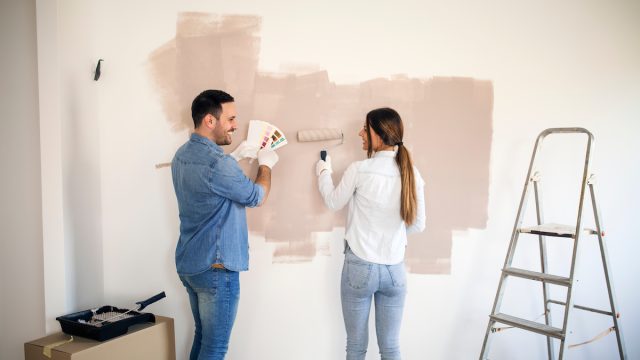8 Paint Colors That Will Make Any Small Room Feel Instantly Bigger
Designers and paint experts share their colorful tips for tricking the eye.
The right paint can make or break any room—and that's especially true when that room is small. A color that's too bright can easily overwhelm the space, while one that's too muted or has the wrong undertones can make your petite interiors appear cramped and drab. That's why we spoke with design experts to bring you the paint colors that will make any small room feel bigger in no time. Read on for their expert advice.
READ THIS NEXT: 6 Paint Colors That Will Boost Your Mood, According to Experts.
8 Paint Colors That Make Small Rooms Feel Bigger
1. Pastels
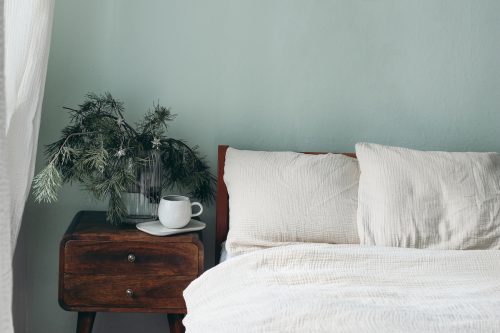
Want to make a room look larger without making it a sea of white? Try incorporating pastels instead.
Pastels, including light yellows, baby pinks and blues, and light pistachio tones, "allow you to fill the room with some nice color while also capitalizing upon the light-reflecting benefits of lighter tones," says interior designer Megan Thompson, founder of Denver-based Spark Interiors.
"You can make your room feel even larger by contrasting the pastel with a white trim and lighter-colored flooring," Thompson suggests.
2. Light neutrals
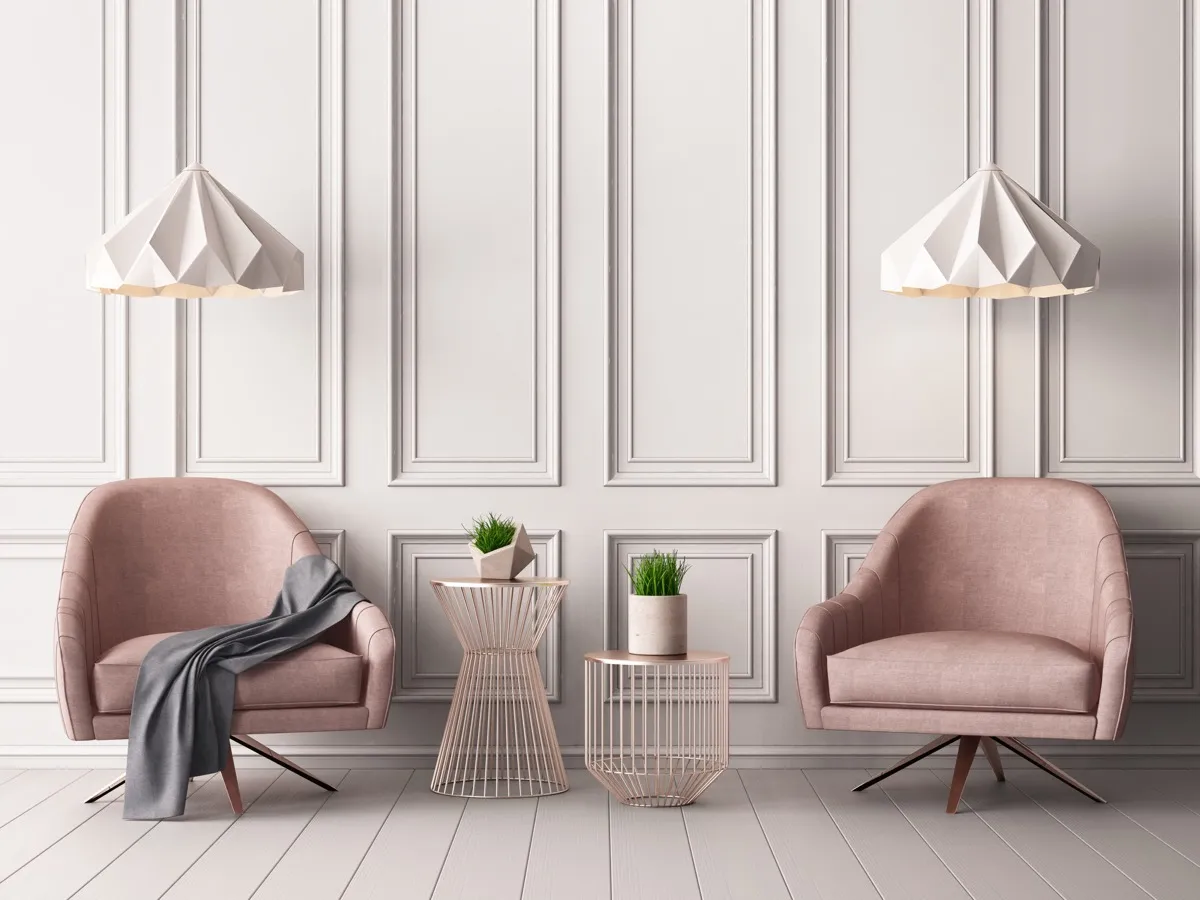
Not a fan of colored walls? Light neutrals are another great alternative to white that'll make a small room appear larger.
"For a contemporary feel, opt for shades of light gray or taupe," suggests Artem Kropovinsky, an interior designer and founder of Arsight. "For a more classic vibe, lighter shades of beige or ivory work well."
Whichever tone you choose, though, Kropovinsky says it's important to keep the color consistent across the room. "This can bring a harmonious feel and create an illusion of a larger area."
READ THIS NEXT: The 5 Best Paint Colors to Brighten Low-Light Rooms, Experts Say.
3. Warm Whites
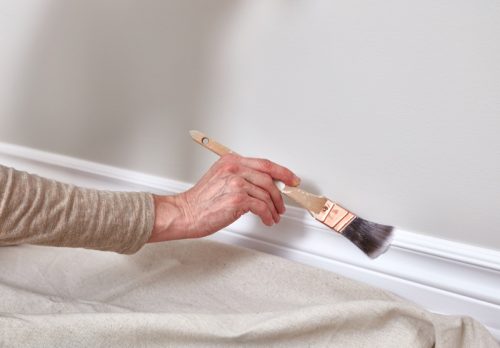
If you do want to go the white route, remember that there are many different shades of white, and choosing the wrong one can negatively affect your small room.
"Brighter whites will make a room feel more open, but it comes at a cost. These blue-ish toned whites can feel clinical and uninviting so we suggest lighter whites but in warmer tones," explains Darren Smith, director at Mackay Pro Painters.
For reference, Smith recommends paint brand Dulux's Hog Bristle Quarter for a wall color, paired with their slightly lighter Natural White for the trim.
4. Deep blues
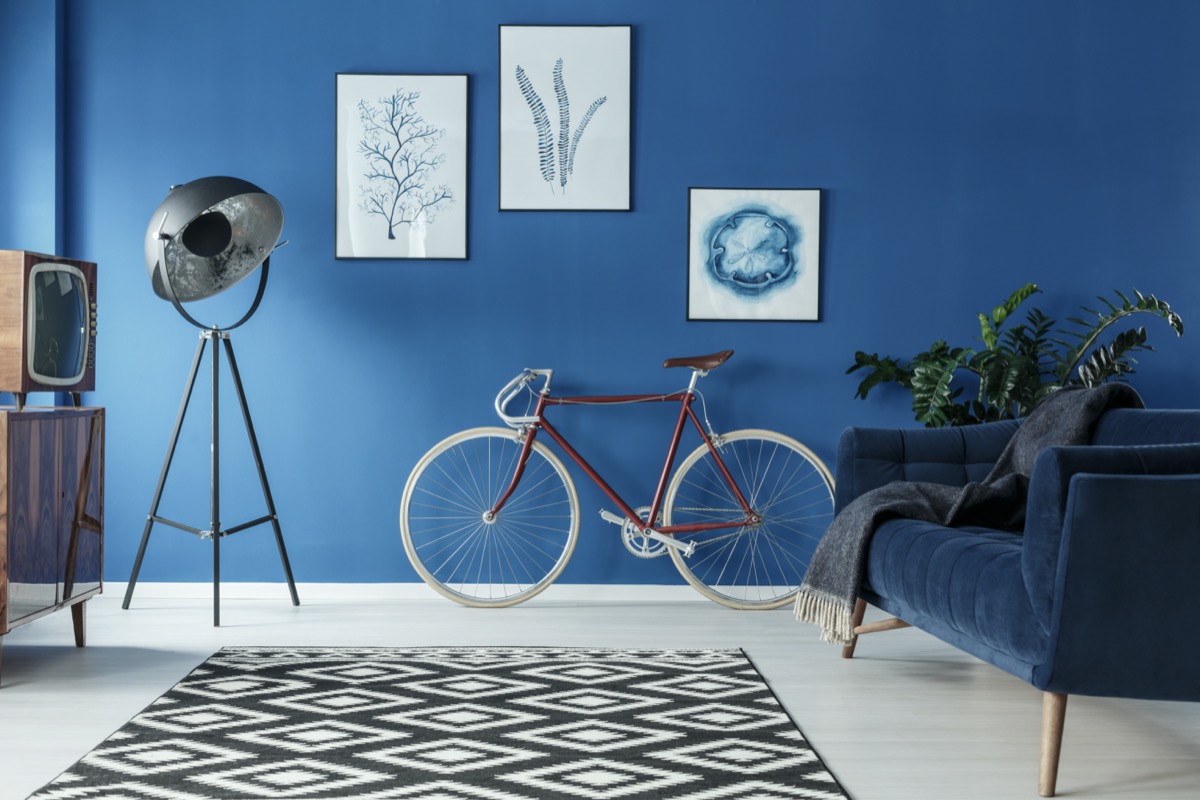
For those truly trying to make a statement in their home, a warmer blue tone can simultaneously make the room appear larger and give your home the bold pop of color that you desire, says Shawn Breyer, owner of Atlanta House Buyers.
"Blues like turquoise are relaxing, similar to deep ocean blues with hints of green," he says. "When you have sufficient natural light flowing into the room, the warmer blues will reflect that light. The vibrancy from these reflections makes your rooms appear larger."
If you're looking to add a contrast wall, Breyer suggests pairing those warm blues with oranges, reds, and browns.
For more home advice delivered straight to your inbox, sign up for our daily newsletter.
5. Dark neutrals
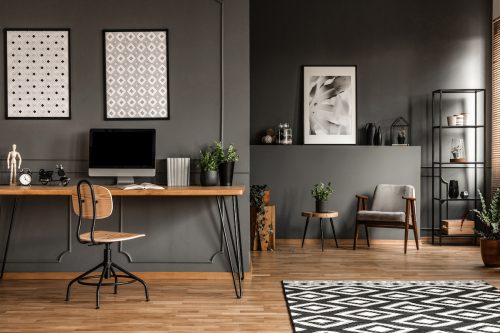
While you may assume that dark colors shrink your space, experts say the opposite is often true.
According to Lanna Ali-Hassan, co-owner of Washington, D.C.-based interior design firm Beyond the Box Interiors, darker paint colors can actually create an optical illusion, tricking the eye into believing that the edges of the room are nonexistent, thus making the room appear bigger.
"There are some darker tones that can make a room feel grand, such as Kendall Charcoal or Hale Navy, both of which are from Benjamin Moore," she says.
"To maximize the effect, go for a monochromatic look by painting the base molding, walls, and ceiling the same color—it adds a sense of opulence and draws the eye upward," adds Philippa Radon, color and design experts at C2 Paint.
6. Pale cool gray
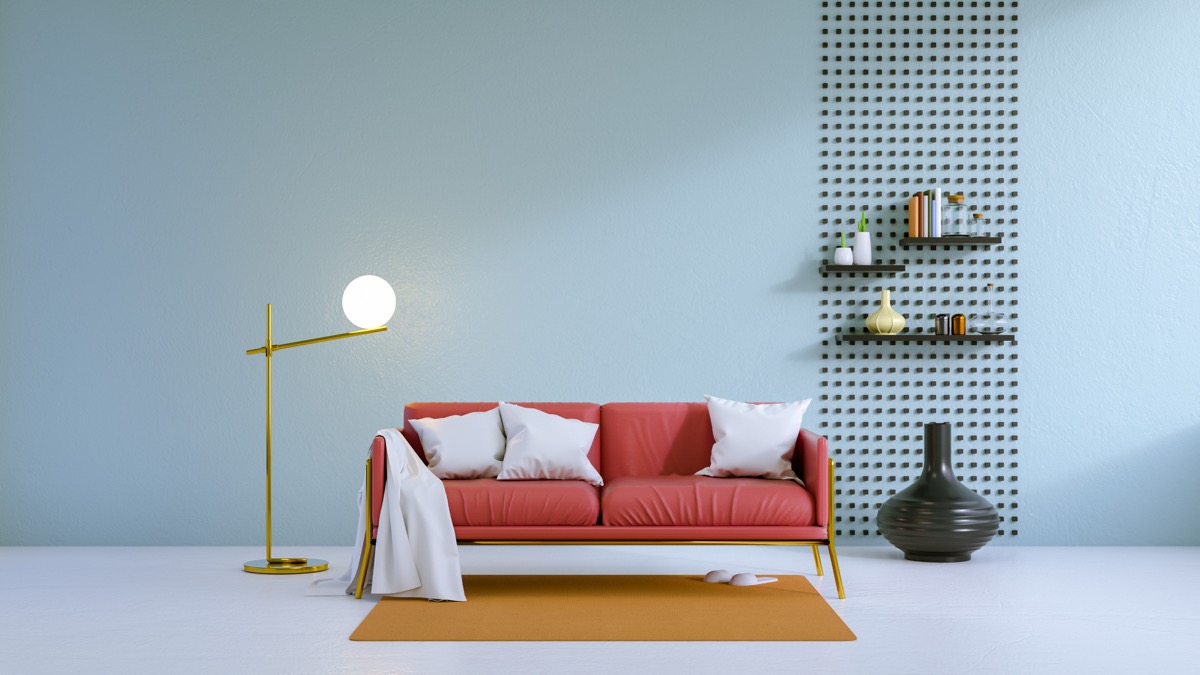
Depending on the shade of gray you choose, it can read as a neutral, as a dark and moody tone, or even blue or green. But the sweet spot for small spaces is a pale, cool-toned gray, according to Jessica Hollander, artist, designer, and founder of the lifestyle brand India & Purry.
"It pulls things together better than a white wall and has a similar expansive brightness and elegance," she says. "It also gives carte blanche to add more lively color with art and decor."
However, Radon advises steering clear of "anything strongly muted…as those colors absorb more light and have a tendency to display a more shadowed feel to a room, which might make it feel smaller."
READ THIS NEXT: The Best Colors to Paint Your Bedroom, According to Sleep Experts.
7. Any light color—in a glossy finish

You can maximize the reflecting efficacy of light cool colors—like pale frosty blue or light lavender—by picking them up in a glossy sheen. "Higher sheens are more reflective, giving the illusion of more light," explains Radon.
And if gloss isn't your thing, "Using an eggshell or a satin finish will also help reflect light," adds Griffing.
8. Full-spectrum paint colors
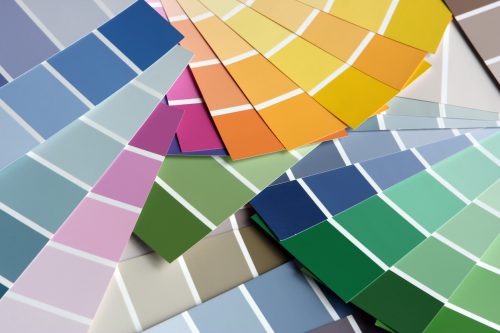
As C2 Paint explains on their website, many companies use eight to 10 colorants when mixing a paint color. In some cases, a brand may use even fewer colorants and mix them with black. But as we know, black absorbs the most light. With this in mind, full-spectrum paints use additional colorants and omit black.
"Full spectrum paint reflects the full spectrum of natural light with no black, so in a room it naturally picks up/coordinates the other colors of fabrics, rugs, furnishings, and accessories, all the while reflecting the light," Radon explains.
